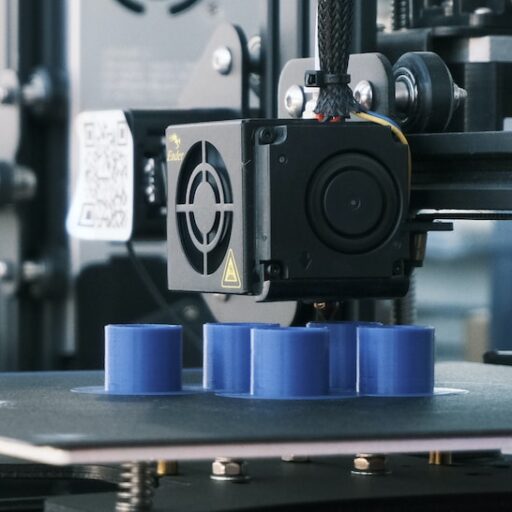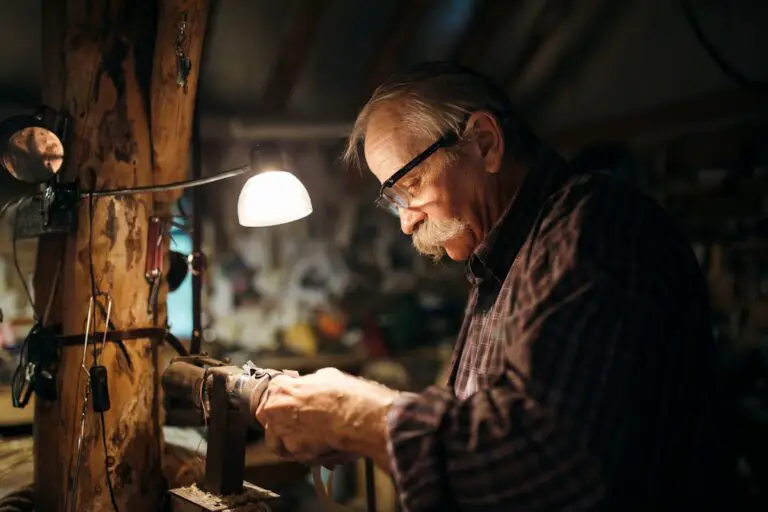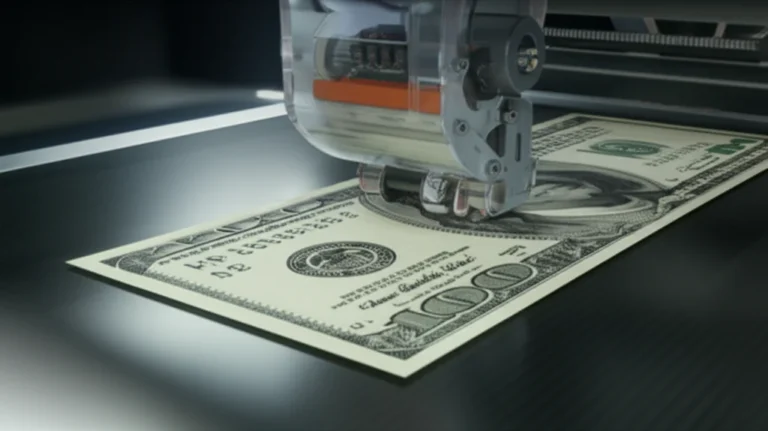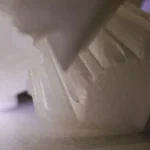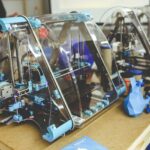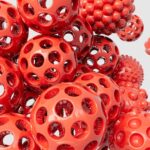Support our educational content for free when you purchase through links on our site. Learn more
🎨 8 Incredible Ways Hobbyists Use 3D Printing in 2025
Imagine turning a wild idea into a physical object right on your desk — no factory required! That’s the magic of 3D printing, and hobbyists everywhere are harnessing this technology to create everything from custom cosplay armor to lifesaving replacement parts. In this article, we’ll explore 8 amazing uses of 3D printing by hobbyists that will inspire your next project and help you get the most out of your printer.
Did you know that the global desktop 3D printing market is expected to grow by over 20% annually through 2025? That means more innovation, more accessible printers, and more creative possibilities than ever before. Whether you’re a beginner or a seasoned maker, we’ll guide you through the types of printers, materials, and software you need — plus share real stories from hobbyists who turned frustration into fabrication.
Ready to discover how 3D printing can transform your hobby? Keep reading to unlock the secrets of rapid prototyping, custom creations, and even side hustles that pay off.
Key Takeaways
- 3D printing empowers hobbyists to rapidly prototype, repair, and customize objects, turning imagination into reality.
- FDM printers like the Creality Ender 3 V2 are perfect for beginners and functional parts, while resin printers such as the Elegoo Mars 4 excel at detailed miniatures.
- Hobbyists use 3D printing for repairing obsolete parts, creating cosplay props, educational models, and even launching small businesses.
- The 3D printing community and open-source model libraries like Thingiverse and Printables.com are invaluable resources.
- Future trends include faster printing speeds, multi-material capabilities, and AI-powered slicers that reduce failed prints.
👉 Shop recommended 3D printers:
- Creality Ender 3 V2 on Amazon | Creality Official
- Elegoo Mars 4 on Amazon | Elegoo Official
- QIDI Tech X-Max 3 on Amazon | QIDI Tech Official
Table of Contents
- ⚡️ Quick Tips and Facts
- The Hobbyist’s Digital Forge: A Brief History of 3D Printing for the Home User
- Why Every Hobbyist Needs a 3D Printer: Unlocking Creative Potential
- The Amazing Things Hobbyists Are Printing: A Universe of Possibilities!
- 1. Bringing Ideas to Life: Rapid Prototyping and Iteration
- 2. The Fixer-Upper’s Dream: Replacing and Repairing Parts
- 3. Custom Creations & Personalization: Making It Uniquely Yours
- 4. Functional Tools & Home Improvement Hacks: Printing Practical Solutions
- 5. Miniatures, Cosplay & Collectibles: From Digital to Tangible Art
- 6. Educational & STEM Projects: Learning by Doing
- 7. Testing, Iterating & Perfecting Designs: Ensuring Strength and Function
- 8. Small-Scale Production & Side Hustles: From Hobby to Business
- Choosing Your First Digital Anvil: Types of 3D Printers for Hobbyists
- Gearing Up: Essential Tools & Software for the Aspiring 3D Printer
- Navigating the Digital Wild West: Finding & Sharing 3D Models
- From Frustration to Fabrication: Common Challenges & Troubleshooting Tips
- The Hobbyist’s Journey: Real-World Experiences and Lessons Learned
- Building Your Tribe: The Vibrant 3D Printing Community
- The Future is Now: What’s Next for Hobbyist 3D Printing?
- Conclusion: Your Creative Journey Starts Here!
- Recommended Links: Dive Deeper!
- FAQ: Your Burning Questions Answered!
- Reference Links: Our Sources & Further Reading
Here at 3D Printed™, we’ve seen it all. We’ve melted filament onto our build plates (and sometimes our fingers), celebrated flawless 24-hour prints, and mourned the spaghetti monsters that were once our ambitious projects. 3D printing for hobbyists isn’t just a pastime; it’s a rabbit hole of creativity, problem-solving, and pure, unadulterated fun. So, grab your calipers, fire up your slicer, and let’s dive into the glorious world of making anything from the comfort of your desk.
⚡️ Quick Tips and Facts
Just dipping your toes in? Here’s the low-down on the hobbyist 3D printing world, served up fast.
- It’s More Than Trinkets: While printing a tiny Yoda is a rite of passage, the real magic is in functional prints, repairs, and custom creations.
- PLA is Your Best Friend: Start with Polylactic Acid (PLA) filament. It’s forgiving, easy to print, and biodegradable. As the author of a popular hobbyist blog notes, it’s “the easiest filament to start with due to its ease of printing and low toxicity.”
- The Community is HUGE: Got a problem? Someone on Reddit, YouTube, or a forum has solved it. Don’t be shy!
- Level Your Bed! 90% of beginner printing problems come from a poorly leveled print bed. Seriously. Learn to do it, then learn to love it.
- It’s an Ecosystem: The printer is just the start. You’ll soon be exploring 3D Design Software, filament types, and post-processing techniques.
- Growth is Exploding: The desktop 3D printing market is booming, making it more affordable and accessible than ever. For a deeper dive, check out these mind-blowing statistics about 3D printing.
- Failure is Part of the Fun: Your first few prints might look like modern art disasters. We call that a “spaghetti detective” case. Embrace the learning process!
The Hobbyist’s Digital Forge: A Brief History of 3D Printing for the Home User
Once upon a time, in the dark ages of the 1980s, 3D printing was the exclusive domain of giant corporations with budgets bigger than our workshops. It was a mythical beast, locked away in R&D labs. But then, something amazing happened. The patents began to expire.
This led to the birth of the RepRap project in 2005, a brilliant initiative out of the University of Bath. The goal? To create an open-source, self-replicating 3D printer. A printer that could print its own parts! 🤯 This single project kicked the doors wide open, “democratiz[ing] creation,” as Shop3DUniverse puts it, and allowing individuals to build their own digital forges.
Suddenly, tinkerers, makers, and hobbyists could get their hands on this transformative technology. Companies like MakerBot, Creality, and Prusa Research jumped in, refining the designs and making them affordable. The strong maker community we see today, with its global collaboration and endless innovation, was born from this movement. What was once a million-dollar industrial machine now sits on our desks, ready to turn our wildest ideas into reality.
Why Every Hobbyist Needs a 3D Printer: Unlocking Creative Potential
“Why do I need one?” you ask. Oh, let us count the ways. A 3D printer is not just another tool; it’s a force multiplier for your creativity. It’s the bridge between the digital and the physical, the ultimate “what if” machine.
- Problem-Solving Power: That broken battery cover on your remote? The specific bracket you need for a shelf that doesn’t exist? You can design and print it in a few hours. No more searching for obscure parts online!
- Unleashed Creativity: You are no longer limited by what you can buy. If you can imagine it and model it, you can hold it in your hand. It’s a superpower.
- The Ultimate Customizer: Why settle for generic? Personalize your gaming setup, create custom cookie cutters, or design bespoke gifts. Your projects become uniquely yours.
- A Gateway to New Skills: You’ll learn about 3D modeling, material science, mechanics, and electronics. It’s a hobby that grows with you, constantly offering new challenges and rewards.
The feeling of solving a real-world problem with an object you manifested from a spool of plastic is, as one hobbyist eloquently stated, “immense.” It’s a game-changer, no matter what your primary hobby is.
The Amazing Things Hobbyists Are Printing: A Universe of Possibilities!
So, what are people actually making with these magical machines? It’s not just plastic doodads, folks. We’re talking about a revolution in personal manufacturing. Here are some of the top ways hobbyists are using their printers, with a galaxy of 3D Printable Objects waiting to be discovered.
1. Bringing Ideas to Life: Rapid Prototyping and Iteration
This is the big one. Got an invention rattling around in your head? A 3D printer allows for what the industry calls rapid prototyping. Instead of waiting weeks for a machine shop, you can have a physical model in your hands the same day.
We once had an idea for a new kind of ergonomic screwdriver handle. We sketched it out, modeled it in Fusion 360, and printed the first version in three hours. It felt… okay. So we tweaked the design, reprinted it, and tried again. By the end of the day, we had a version that felt perfect. This iterative process is invaluable for inventors and designers.
2. The Fixer-Upper’s Dream: Replacing and Repairing Parts
This is where your printer becomes a household hero. That little plastic clip on your dishwasher rack that broke? The knob on your vintage amplifier? Good luck finding those!
✅ With a 3D printer:
- Measure the broken part with digital calipers.
- Model a replacement in a program like Tinkercad or Fusion 360.
- Print it in a durable material like PETG or ABS.
- Boom! You just saved an appliance from the landfill and yourself from a costly repair call.
This is especially true for “replacing obsolete parts,” a common headache for anyone working with older equipment.
3. Custom Creations & Personalization: Making It Uniquely Yours
This is where the fun really begins. Your imagination is the only limit.
- Gamers: Custom controller stands, headset hooks, personalized keycaps, and even entire console shells.
- Organizers: Bespoke drawer dividers, cable management clips, and custom tool holders for your workshop.
- Parents: Unique cookie cutters, custom bath toys, and personalized nameplates for your kids’ rooms.
- Everyone: Lithophanes (3D printed photos!), custom phone cases, and planters with unique geometric designs.
4. Functional Tools & Home Improvement Hacks: Printing Practical Solutions
Your printer can print its own accessories and tools to make your life easier. Think of it as a self-upgrading machine!
- Workshop Jigs: Create perfect-angle cutting guides, drill presses for your Dremel, or soldering iron holders.
- Painting Aids: Print painter’s pyramids to hold up your projects or stencils for complex designs.
- Gardening Tools: We’ve seen everything from self-watering planters to custom-designed seed spreaders.
- Kitchen Gadgets: Bag clips, citrus juicers, pasta portioners… if you can think of it, you can probably print it (just be sure to use food-safe materials and practices!).
5. Miniatures, Cosplay & Collectibles: From Digital to Tangible Art
For the geeks among us (and let’s be honest, that’s most of us), this is a massive area.
- Tabletop Gaming: Print an entire army of miniatures for Warhammer 40,000, custom D&D monsters, or intricate terrain pieces. Resin printers (SLA/DLP) shine here, producing incredible detail.
- Cosplay: Why buy a prop when you can print it? Helmets, armor pieces, and detailed weaponry from your favorite movies and games are all possible. We’ve seen full suits of Mandalorian armor printed piece by piece!
- Collectibles: Create replicas of movie props, scale models of famous starships, or busts of your favorite characters.
6. Educational & STEM Projects: Learning by Doing
3D printing is a phenomenal teaching tool. It makes abstract concepts tangible.
- Science: Print models of DNA helices, planetary systems, or anatomical hearts.
- Math: Create physical representations of complex geometric shapes and mathematical functions.
- Engineering: Design and print gears, levers, and simple machines to understand mechanical principles. This is a core part of 3D Printing in Education.
7. Testing, Iterating & Perfecting Designs: Ensuring Strength and Function
As RC car enthusiast James Beswick, who used his printer to build the world’s fastest model RC car, noted, “The main benefit is, I can create shapes with a printer that you cannot create easily with any other means.” This ability is crucial for testing.
You can print a part with different infill percentages or wall thicknesses to test its strength. You can print multiple versions of a snap-fit enclosure to get the tolerances just right. This iterative testing helps you “identify potential production problems and hidden design flaws early on,” saving time and material down the line.
8. Small-Scale Production & Side Hustles: From Hobby to Business
Ever thought your cool creation could make you some money? Many hobbyists turn their passion into a side hustle or even a full-blown business.
- Etsy Shops: Sell your unique designs, from custom planters to specialized gaming accessories.
- Local Services: Offer a printing service to your local community for people who need a part made but don’t have a printer.
- Niche Products: Design and sell a product that solves a very specific problem for a specific community (e.g., custom camera mounts for drone racers).
Choosing Your First Digital Anvil: Types of 3D Printers for Hobbyists
Alright, you’re convinced. But which printer do you buy? The market is flooded with options, which is both great and overwhelming. Let’s break down the two main types you’ll encounter as a hobbyist. For more in-depth analysis, check out our 3D Printer Reviews.
FDM (Fused Deposition Modeling): The Workhorse for Everyday Prints
This is what most people picture when they think of 3D printing. An FDM printer melts a plastic filament and extrudes it layer by layer to build an object.
| Feature | FDM Printer Characteristics |
|---|---|
| How it Works | Melts and extrudes thermoplastic filament, like a hot glue gun drawing in the air. |
| Best For | Functional parts, prototypes, large objects, tools, home decor, and general-purpose printing. |
| Pros | ✅ Affordable, ✅ Wide range of materials (PLA, PETG, ABS, TPU), ✅ Larger build volumes, ✅ Durable prints. |
| Cons | ❌ Visible layer lines, ❌ Less fine detail than resin, ❌ Can be noisy and require tinkering. |
| Popular Models | Creality Ender 3 V2, Prusa i3 MK3S+, Bambu Lab P1P |
The Creality Ender 3 V2 is a legendary entry point. As one hobbyist puts it, “It’s a fantastic printer for the price, and there are tons of upgrades and modifications available for it.” For those wanting more speed and features out of the box, the Bambu Lab P1P or a QIDI Tech X-Plus 3 are incredible, user-friendly options that bring high-speed printing to the masses.
👉 Shop FDM Printers on:
- Creality Ender 3 V2: Amazon | Creality Official Website
- Bambu Lab P1P: Bambu Lab Official Website
- QIDI Tech X-Plus 3: Amazon | QIDI Tech Official Website
SLA/DLP (Stereolithography/Digital Light Processing): For Fine Details and Miniatures
Instead of melting plastic, these printers use a UV light source (a laser for SLA, a screen for DLP/MSLA) to cure liquid resin layer by layer in a vat. The result? Jaw-dropping detail.
| Feature | SLA/DLP Printer Characteristics |
|---|---|
| How it Works | Cures liquid photopolymer resin with a UV light source. |
| Best For | Miniatures, jewelry, dental models, highly detailed sculptures, and any application where surface finish is paramount. |
| Pros | ✅ Incredible detail and smooth surface finish, ✅ High accuracy and precision. |
| Cons | ❌ Messy post-processing (washing and curing), ❌ Resin fumes require good ventilation, ❌ Prints can be brittle, ❌ Smaller build volumes. |
| Popular Models | Elegoo Mars series, Anycubic Photon series |
If your main goal is printing D&D miniatures that will make your friends weep with envy, a resin printer is the way to go. The learning curve involves handling chemicals safely, but the results speak for themselves.
👉 Shop Resin Printers on:
- Elegoo Mars 4: Amazon | Elegoo Official Website
- Anycubic Photon Mono 2: Amazon | Anycubic Official Website
Gearing Up: Essential Tools & Software for the Aspiring 3D Printer
Buying the printer is just step one. To truly join the ranks, you’ll need to assemble your digital and physical toolkit.
H3: The Brains of the Operation: CAD & Slicer Software
You need two key types of software:
- CAD (Computer-Aided Design) Software: This is where you create or modify 3D models.
- For Beginners: Tinkercad is a free, browser-based tool that’s incredibly easy to learn. You build things by combining basic shapes.
- For Intermediate/Advanced Users: Fusion 360 offers a free license for personal use and is a powerhouse for designing functional parts with precise measurements.
- Slicer Software: This program takes your 3D model (an STL or 3MF file) and “slices” it into the hundreds or thousands of layers your printer will follow. It generates the G-code (the instruction manual for your printer).
- Top Free Choices: Ultimaker Cura and PrusaSlicer are the two titans. Both are free, powerful, and have profiles for almost every printer on the market. We recommend starting with the one your printer manufacturer suggests and then exploring the other.
H3: The Fuel: Filaments & Resins – What’s Your Material of Choice?
The material you choose dramatically affects your print’s properties.
- PLA (Polylactic Acid): The go-to for beginners. Easy to print, low odor, comes in a rainbow of colors. Perfect for visual models, trinkets, and low-stress functional parts.
- PETG (Polyethylene Terephthalate Glycol): A great step-up from PLA. More durable, temperature resistant, and somewhat flexible. Excellent for functional parts that need to withstand some abuse. It can be a bit “stringy” to print.
- ABS (Acrylonitrile Butadiene Styrene): The stuff LEGOs are made of. Very strong and temperature resistant. However, it’s not recommended for beginners as it “has a tendency to warp and the need for an enclosure” to manage temperature and fumes.
- TPU (Thermoplastic Polyurethane): A flexible, rubber-like filament. Perfect for printing things like phone cases, vibration dampeners, or RC car tires.
- Advanced Materials: High-end hobbyist printers like the QIDI Tech X-Max 3 can handle engineering-grade materials like Nylon, Polycarbonate (PC), and even Carbon Fiber-reinforced filaments for incredibly strong parts.
H3: Post-Processing & Safety Essentials: Finishing Touches and Staying Safe
Your print is done! Now what? Time for post-processing.
Essential FDM Toolkit:
- Flush Cutters: For snipping away supports and brim material.
- Deburring Tool / Hobby Knife: For cleaning up edges and imperfections.
- Digital Calipers: For measuring parts accurately for design and calibration.
- Needle-Nose Pliers: For yanking out stubborn bits of support.
- Sandpaper: A variety of grits for smoothing layer lines.
Essential Resin Safety & Toolkit:
- Nitrile Gloves: ALWAYS wear gloves when handling liquid resin.
- Safety Glasses: Protect your eyes from splashes.
- Wash & Cure Station: While not essential (you can use tubs of Isopropyl Alcohol and a UV light), these stations make the messy cleanup process much easier and safer.
- Ventilation: A well-ventilated room or an enclosure with an exhaust fan is crucial to deal with resin fumes.
Navigating the Digital Wild West: Finding & Sharing 3D Models
You don’t have to design everything from scratch! There are massive online libraries filled with millions of free and paid models.
- Thingiverse: The original. It’s huge and has almost everything, though it can be a bit slow sometimes.
- Printables.com (by Prusa): The new challenger. It’s fast, well-organized, and has a great community with printing contests. Many creators are moving here.
- MyMiniFactory: Known for its curated, high-quality models, especially for gaming and pop culture. Many models are paid, but they are guaranteed to be printable.
- Cults3D: A marketplace with a mix of free and paid designs, often featuring very stylish and artistic models.
When you download a model, you’re typically getting an .STL file. This is the universal format that you’ll load into your slicer software.
From Frustration to Fabrication: Common Challenges & Troubleshooting Tips
Let’s be real: 3D printing can be frustrating. You will have failures. But overcoming them is part of the journey. Here are the most common gremlins and how to banish them.
- Problem: The first layer won’t stick! (The #1 issue)
- Solution: Your nozzle is likely too far from or too close to the build plate. Re-level your bed! Also, clean your build plate with Isopropyl Alcohol to remove any oils from your fingers. A light coating of glue stick or hairspray can work wonders.
- Problem: My print looks like a plate of spaghetti!
- Solution: This is a “spaghetti monster.” It usually happens when a print detaches from the bed mid-print. See the solution above. It can also be caused by a severely clogged nozzle.
- Problem: Stringing or “whiskers” between parts of my print.
- Solution: This is caused by filament oozing from the nozzle as it travels. In your slicer, try increasing retraction distance and retraction speed. You can also try lowering your print temperature slightly.
- Problem: The layers are separating or cracking.
- Solution: This is called poor layer adhesion. It’s often caused by printing too cold or too fast. Try increasing your nozzle temperature by 5-10°C. For materials like ABS, a draft from an open window can cause this, which is why an enclosure is so important.
The Hobbyist’s Journey: Real-World Experiences and Lessons Learned
One of our team members, Dave, tells a story that perfectly captures the hobbyist’s journey. He bought an Ender 3, excited to print upgrades for his drone. His first print? A calibration cube. It came out looking more like a parallelogram. Frustrated, he spent the next two nights on YouTube and Reddit, learning about belt tension, frame squaring, and Z-axis binding.
He tinkered, he tightened, he calibrated. Finally, he printed a perfect cube. The cheer he let out was probably heard by his neighbors. A week later, he designed and printed a custom landing gear for his drone that was lighter and stronger than the original. He had gone from frustration to fabrication.
His experience echoes a sentiment shared by many: “The satisfaction of holding a physical object that you designed and printed yourself is immense.” It’s not just about the final product; it’s about the process of learning, failing, and finally succeeding. It’s about bending a complex machine to your will to create something entirely new.
Building Your Tribe: The Vibrant 3D Printing Community
You are not alone on this journey! The 3D printing community is one of the most helpful and collaborative groups out there.
- Reddit: Subreddits like r/3Dprinting, r/FixMyPrint, and specific forums for your printer brand (e.g., r/ender3) are invaluable resources. Post a picture of your failed print, and you’ll get a dozen helpful suggestions in an hour.
- YouTube: Creators like Teaching Tech, Maker’s Muse, and CNC Kitchen provide incredible tutorials, reviews, and scientific deep dives into materials and techniques.
- Discord Servers: Many YouTubers and printer brands have active Discord communities where you can chat in real-time with other enthusiasts.
- Printables/Thingiverse: The comments section on models is a great place to see how others printed an object, what settings they used, and any modifications they made.
This “strong, current maker community,” as noted by industry observers, is your greatest asset. Tap into it!
The Future is Now: What’s Next for Hobbyist 3D Printing?
If you think today’s printers are cool, just wait. The pace of 3D Printing Innovations is staggering. What was high-end five years ago is now standard on entry-level machines. Here’s what’s on the horizon:
- Ludicrous Speed: Thanks to firmware like Klipper and printer designs like CoreXY, printers like the QIDI X-Max 3 and Bambu Lab series are printing high-quality models 3-5 times faster than older machines. Speed is becoming the new standard.
- Multi-Material Printing: Systems like Bambu Lab’s AMS (Automatic Material System) are making it easy to print with multiple colors or materials in a single print. This used to be a nightmare to set up, but it’s becoming a plug-and-play feature.
- AI Integration: Slicers are starting to use AI to detect potential flaws in your model before you print, suggesting orientation changes or support structures automatically. Imagine a world with fewer failed prints!
- Smarter Printers: Features like automatic bed leveling, vibration compensation, and spaghetti detection, once reserved for premium printers, are trickling down to more affordable models. As QIDI Tech notes, their printers are becoming “incredibly user-friendly, even for beginners.”
The future of hobbyist printing is faster, smarter, and more accessible than ever. The best time to jump in was yesterday. The second-best time is right now.
Conclusion: Your Creative Journey Starts Here!
So, there you have it — the full scoop on how hobbyists are using 3D printing to unlock creativity, solve problems, and even launch side hustles. From rapid prototyping to custom cosplay armor, from fixing that impossible-to-find broken part to printing intricate miniatures, 3D printing is a versatile tool that transforms ideas into tangible reality.
If you’re wondering which printer to start with, our team confidently recommends beginning with an FDM printer like the Creality Ender 3 V2 for its affordability, community support, and upgrade potential. For those craving ultra-fine details, especially for miniatures or jewelry, a resin printer such as the Elegoo Mars 4 is a fantastic choice, though it requires more care and post-processing.
We also highlighted advanced options like the QIDI Tech X-Max 3, which combines user-friendliness with high-temperature capabilities and multi-material support — a great investment if you want to push the boundaries of your hobby.
Remember Dave’s story? The journey from frustration to fabrication is part of the fun. Every failed print is a step closer to mastering this craft. The vibrant community is there to help you along the way, and the future promises even smarter, faster, and more accessible machines.
So, are you ready to turn your ideas into reality? Your digital forge awaits!
Recommended Links: Dive Deeper!
👉 CHECK PRICE on:
- Creality Ender 3 V2: Amazon | Creality Official Website | Thingiverse Models
- Bambu Lab P1P: Bambu Lab Official Website | Amazon
- QIDI Tech X-Max 3: Amazon | QIDI Tech Official Website | Thingiverse Models
- Elegoo Mars 4: Amazon | Elegoo Official Website | MyMiniFactory Models
Books to Level Up Your Skills:
- 3D Printing Failures: How to Diagnose and Repair All 3D Printing Issues by Sean Aranda — Amazon Link
- Make: 3D Printing: The Essential Guide to 3D Printers by Anna Kaziunas France — Amazon Link
- 3D Printing Projects: 20 Design Projects for Your 3D Printer by DK Publishing — Amazon Link
FAQ: Your Burning Questions Answered!
What are the most popular 3D printing projects for beginners?
H4: Starter Projects to Build Confidence
Beginners often start with calibration cubes, simple keychains, phone stands, and cookie cutters. These projects are quick, require minimal supports, and help you learn the basics of bed leveling, extrusion, and slicing. As confidence grows, hobbyists move on to more complex items like tool holders, replacement parts, and miniatures.
Read more about “15 Eye-Opening 3D Printing Statistics for Beginners (2025) 🚀”
How do I choose the right 3D printer for my hobby needs?
H4: Match Printer Type to Your Goals
- If you want functional parts, larger prints, and ease of use, an FDM printer like the Creality Ender 3 V2 is ideal.
- For high-detail miniatures or jewelry, a resin printer such as the Elegoo Mars 4 is better.
- Consider your budget, desired build volume, material compatibility, and willingness to tinker.
- Look for features like auto bed leveling, enclosure, and filament sensors if you want a smoother experience.
- Check community support and availability of replacement parts.
Read more about “8 Types of 3D Printing Technology You Need to Know in 2025 🔥”
What are some creative things to 3D print at home?
H4: Endless Possibilities
- Custom phone cases, cable organizers, and desk accessories.
- Replacement parts for appliances or gadgets.
- Cosplay props and costume pieces.
- Educational models like anatomical parts or geometric shapes.
- Personalized gifts like lithophanes or engraved keychains.
- Functional tools like jigs, clamps, or garden planters.
Read more about “What Is a 3D Printed Item? 🔍 Discover 15 Must-Know Facts (2025)”
What are the best 3D printing materials for hobbyists to use?
H4: Material Selection Based on Use
- PLA: Best for beginners and decorative prints.
- PETG: Durable and slightly flexible; great for functional parts.
- ABS: Strong and heat resistant but requires enclosure and ventilation.
- TPU: Flexible, for rubber-like parts.
- Nylon and Carbon Fiber composites: For advanced users needing strength and durability.
Read more about “Can You Make Money with a 3D Printer? 11+ Ways to Profit in 2025 💸”
Can I make money selling 3D printed items as a hobbyist?
H4: Turning Passion into Profit
Absolutely! Many hobbyists run Etsy shops or local services printing custom items. Success depends on finding a niche, quality prints, and good customer service. Remember to factor in material costs, printing time, and post-processing when pricing. Also, be mindful of intellectual property rights when selling designs.
Read more about “Is 3D Printing a Good Thing? 7 Surprising Truths You Need to Know 🚀 (2025)”
How do I design my own 3D printing models for personal use?
H4: Learning the Design Tools
Start with beginner-friendly CAD software like Tinkercad, which is free and web-based. As you progress, move to more powerful tools like Fusion 360 or Blender for organic shapes. Plenty of tutorials exist online, and practicing by modifying existing models is a great way to learn.
Read more about “10 Must-Have Phone Cases to Protect & Impress in 2025 📱”
What are some safety precautions I should take when 3D printing at home?
H4: Keeping It Safe
- Always print in a well-ventilated area, especially when using ABS or resin.
- Wear nitrile gloves and safety glasses when handling resin.
- Keep your printer on a stable, non-flammable surface.
- Avoid touching hot parts like the nozzle or heated bed.
- Store filaments and resins properly, away from children and pets.
- Follow manufacturer instructions for maintenance and disposal of waste.
Read more about “What Are Most 3D Printed Objects Made of Today? Top 11 Materials (2025) 🛠️”
Reference Links: Our Sources & Further Reading
- Shop3DUniverse: How Today’s Hobbyists Use 3D Printing
- Lenny Flank: Beginning 3D Printing as a Hobby
- QIDI Tech 3D Printers Collection
- Creality Official Website
- Bambu Lab Official Website
- Elegoo Official Website
- Ultimaker Cura Software
- PrusaSlicer Software
- Thingiverse 3D Models
- MyMiniFactory 3D Models
- Printables by Prusa
- Tinkercad CAD Software
- Fusion 360 CAD Software
- 3D Printing Statistics and Trends
- QIDI Tech 3D Printers for Sale | Buy FDM 3D Printer – Qidi Tech Online Store
Ready to start your 3D printing adventure? Dive into the community, pick your printer, and let your imagination run wild! 🚀
